« Return to all search results
Title Search Results
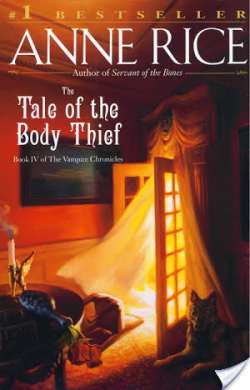
In a gripping feat of storytelling, Anne Rice continues the extraordinary Vampire Chronicles that began with the now-classic Interview with the Vampire. For centuries, Lestat—vampire-hero, enchanter, seducer of mortals—has been a courted prince in the dark and flourishing universe of the living dead. Now he is alone. And in his overwhelming need to destroy his doubts and his loneliness, Lestat embarks on the most dangerous enterprise he has undertaken in all the years of his haunted existence. Look for a special preview of Anne Rice’s Prince Lestat in the back of the book. The Vampire Chronicles continue in Prince Lestat and the Realms of Atlantis, available for pre-order now. Praise for The Tale of the Body Thief “Tinged with mystery, full of drama . . . The story is involving, the twists surprising.”—People “Rice is our modern messenger of the occult, whose nicely updated dark-side passion plays twist and turn in true Gothic form.”—San Francisco Chronicle “Fast-paced . . . . mesmerizing . . . silkenly sensuous . . . No one writing today matches her deftness with the erotic.”—The Atlanta Journal-Constitution “Hypnotic . . . masterful.”—Cosmopolitan From the Trade Paperback edition.
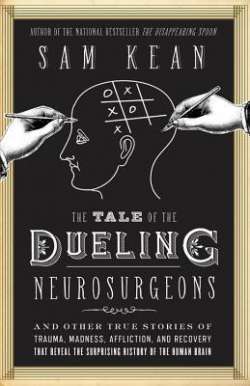
The author of the bestseller The Disappearing Spoon reveals the secret inner workings of the brain through strange but true stories. Early studies of the human brain used a simple method: wait for misfortune to strike -- strokes, seizures, infectious diseases, horrendous accidents -- and see how victims coped. In many cases their survival was miraculous, if puzzling. Observers were amazed by the transformations that took place when different parts of the brain were destroyed, altering victims' personalities. Parents suddenly couldn't recognize their own children. Pillars of the community became pathological liars. Some people couldn't speak but could still sing. In The Tale of the Dueling Neurosurgeons, Sam Kean travels through time with stories of neurological curiosities: phantom limbs, Siamese twin brains, viruses that eat patients' memories, blind people who see through their tongues. He weaves these narratives together with prose that makes the pages fly by, to create a story of discovery that reaches back to the 1500s and the high-profile jousting accident that inspired this book's title.* With the lucid, masterful explanations and razor-sharp wit his fans have come to expect, Kean explores the brain's secret passageways and recounts the forgotten tales of the ordinary people whose struggles, resilience, and deep humanity made neuroscience possible. *"The Tale of the Dueling Neurosurgeons" refers to the case of French king Henri II, who in 1559 was lanced through the skull during a joust, resulting in one of the most significant cases in neuroscience history. For hundreds of years scientists have gained important lessons from traumatic accidents and illnesses, and such misfortunes still represent their greatest resource for discovery.
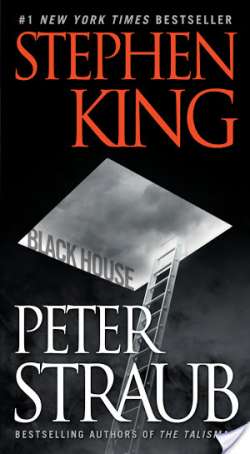
A retired Los Angeles homicide detective living in a rural Wisconsin town, Jack Sawyer is called in to assist the local police chief in solving a gruesome series of murders that causes Jack to experience inexplicable waking nightmares.
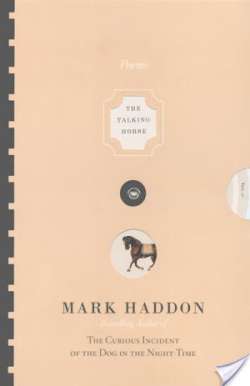
From the phenomenally bestselling author of The Curious Incident of the Dog in the Night-time comes Mark Haddon’s first collection of poems. That Mark Haddon’s first book after The Curious Incident of the Dog in the Night-time is a book of poetry may surprise his many fans; that it is also one of such virtuosity and range will not. The Talking Horse and the Sad Girl and the Village Under the Sea reveals a poet of great versatility and formal talent. All the gifts so admired in Haddon’s prose are in strong evidence here – the humanity, the dark humour, and the uncanny ventriloquism – but Haddon is also a writer of considerable seriousness, lyric power, and surreal invention. This book will consolidate his reputation as one of the most imaginative writers in contemporary literature. From the Trade Paperback edition.
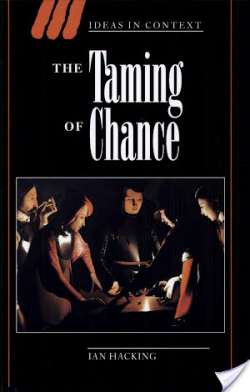
This book combines detailed scientific historical research with characteristic philosophic breadth and verve.
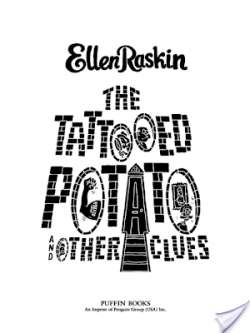
From the Newbery Award-winning author of THE WESTING GAME, more clever riddles and wordplay, clues to be found, and mysteries to be solved! Wanted: Assistant to a painter (and a secret sleuth) Dickory Dock has come to 12 Cobble Lane to take the job as painter's assistant to the artist Garson. The townhouse looks charming and quaint, but inside its redbrick walls lurk suspicious characters, multiple mysteries, and one very eccentric portrait artist. Clues abound; and suddenly Dickory finds herself assisting Garson not in art but in crime solving. Can Dickory untangle the web of mysteries within mysteries and discover the true secret hiding on Cobble Lane?
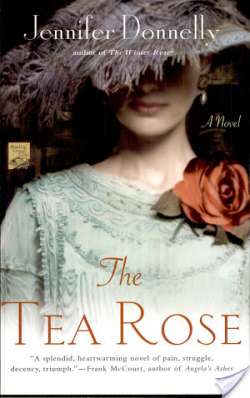
The Tea Rose is a towering old-fashioned story, imbued with a modern sensibility, of a family's destruction, of murder and revenge, of love lost and won again, and of one determined woman's quest to survive and triumph. East London, 1888-a city apart. A place of shadow and light where thieves, whores, and dreamers mingle, where children play in the cobbled streets by day and a killer stalks at night, where bright hopes meet the darkest truths. Here, by the whispering waters of the Thames, a bright and defiant young woman dares to dream of a life beyond tumbledown wharves, gaslit alleys, and the grim and crumbling dwellings of the poor. Fiona Finnegan, a worker in a tea factory, hopes to own a shop one day, together with her lifelong love, Joe Bristow, a costermonger's son. With nothing but their faith in each other to spur them on, Fiona and Joe struggle, save, and sacrifice to achieve their dreams. But Fiona's dreams are shattered when the actions of a dark and brutal man take from her nearly everything-and everyone-she holds dear. Fearing her own death at the dark man's hands, she is forced to flee London for New York. There, her indomitable spirit-and the ghosts of her past-propel her rise from a modest west side shopfront to the top of Manhattan's tea trade. Authentic and moving, Jennifer Donnelly's The Tea Rose is an unforgettable novel.
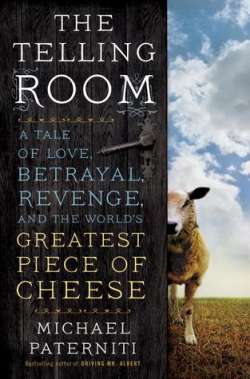
NEW YORK TIMES BESTSELLER • NAMED ONE OF THE BEST BOOKS OF THE YEAR BY NPR • Entertainment Weekly • Kirkus Reviews • The Christian Science Monitor In the picturesque village of Guzmán, Spain, in a cave dug into a hillside on the edge of town, an ancient door leads to a cramped limestone chamber known as “the telling room.” Containing nothing but a wooden table and two benches, this is where villagers have gathered for centuries to share their stories and secrets—usually accompanied by copious amounts of wine. It was here, in the summer of 2000, that Michael Paterniti found himself listening to a larger-than-life Spanish cheesemaker named Ambrosio Molinos de las Heras as he spun an odd and compelling tale about a piece of cheese. An unusual piece of cheese. Made from an old family recipe, Ambrosio’s cheese was reputed to be among the finest in the world, and was said to hold mystical qualities. Eating it, some claimed, conjured long-lost memories. But then, Ambrosio said, things had gone horribly wrong. . . . By the time the two men exited the telling room that evening, Paterniti was hooked. Soon he was fully embroiled in village life, relocating his young family to Guzmán in order to chase the truth about this cheese and explore the fairy tale–like place where the villagers conversed with farm animals, lived by an ancient Castilian code of honor, and made their wine and food by hand, from the grapes growing on a nearby hill and the flocks of sheep floating over the Meseta. What Paterniti ultimately discovers there in the highlands of Castile is nothing like the idyllic slow-food fable he first imagined. Instead, he’s sucked into the heart of an unfolding mystery, a blood feud that includes accusations of betrayal and theft, death threats, and a murder plot. As the village begins to spill its long-held secrets, Paterniti finds himself implicated in the very story he is writing. Equal parts mystery and memoir, travelogue and history, The Telling Room is an astonishing work of literary nonfiction by one of our most accomplished storytellers. A moving exploration of happiness, friendship, and betrayal, The Telling Room introduces us to Ambrosio Molinos de las Heras, an unforgettable real-life literary hero, while also holding a mirror up to the world, fully alive to the power of stories that define and sustain us. Praise for The Telling Room “Captivating . . . Paterniti’s writing sings, whether he’s talking about how food activates memory, or the joys of watching his children grow.”—NPR
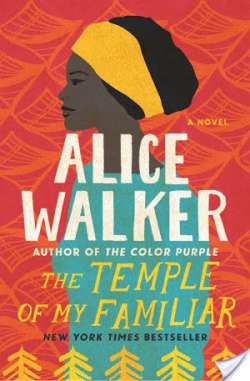
In Walker’s follow-up to The Color Purple, webs of characters are drawn toward critical confrontations with history In The Temple of My Familiar, Celie and Shug from The Color Purple subtly shadow the lives of dozens of characters, all dealing in some way with the legacy of the African experience in America. From recent African immigrants, to a woman who grew up in the mixed-race rainforest communities of South America, to Celie’s own granddaughter living in modern-day San Francisco, all must come to understand the brutal stories of their ancestors to come to terms with their own troubled lives. As Walker follows these astonishing characters, she weaves a new mythology from old fables and history, a profoundly spiritual explanation for centuries of shared African-American experience. This ebook features an illustrated biography of Alice Walker including rare photos from the author’s personal collection.
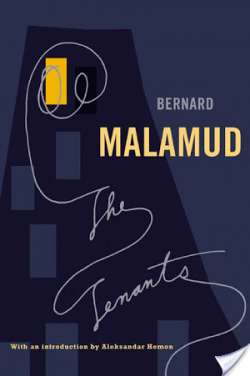
With a new introduction by Aleksandar Hemon In The Tenants (1971), Bernard Malamud brought his unerring sense of modern urban life to bear on the conflict between blacks and Jews then inflaming his native Brooklyn. The sole tenant in a rundown tenement, Henry Lesser is struggling to finish a novel, but his solitary pursuit of the sublime grows complicated when Willie Spearmint, a black writer ambivalent toward Jews, moves into the building. Henry and Willie are artistic rivals and unwilling neighbors, and their uneasy peace is disturbed by the presence of Willie's white girlfriend Irene and the landlord Levenspiel's attempts to evict both men and demolish the building. This novel's conflict, current then, is perennial now; it reveals the slippery nature of the human condition, and the human capacity for violence and undoing.
